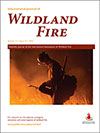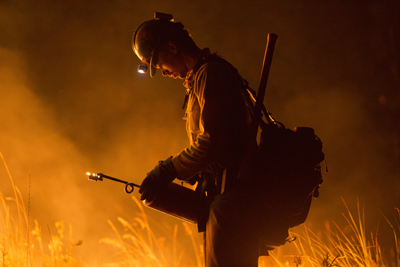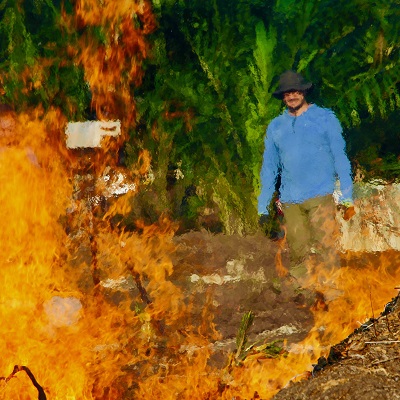
International Journal of Wildland Fire
Volume 31 Number 10 2022
WF22020Mapping the ethical landscape of wildland fire management: setting an agendum for research and deliberation on the applied ethics of wildland fire
Decisions in wildfire management include important ethical dimensions: how should we resolve competing trade-offs and priorities? In this paper, we provide a roadmap to different ethical issues involved in wildfire, argue for discussing these more explicitly, and suggest the need for further research to support fair and equitable management decisions.
As we scale up the use of prescribed fire in the US, we need a better scientific understanding of how the health costs associated with its smoke in the present compare to the future benefits of reduced wildfire smoke exposure. Research is called for on the public health benefits and costs of prescribed fire.
WF22025 Abstract | WF22025 Full Text | WF22025PDF (2.4 MB) Open Access Article
WF21099The US Forest Service Life First safety initiative: exploring unnecessary exposure to risk

Organisational studies can unearth the values of everyday work cultures. This application of the social science of wildland firefighting discusses unnecessary risk in normal operations. Perceived internal and external organisational pressures interact with mission-oriented work cultures, creating for employees an unnecessary exposure to risk. Forest Service photograph by Kari Greer, taken on 24 August 2016.
WF21099 Abstract | WF21099 Full Text | WF21099PDF (774 KB) Open Access Article
WF21168Collective action for managing wildfire risk across boundaries in forest and range landscapes: lessons from case studies in the western United States
Actors must collectively manage wildfire risk across administrative, conceptual, organisational and other boundaries in fire-prone landscapes. We interviewed practitioners in five cases across the western United States, identifying how actors were engaging in collective action to address wildfire risk, organised through a typology of actor functions and boundary-spanning features.
WF21135GAMBUT field experiment of peatland wildfires in Sumatra: from ignition to spread and suppression
 , Eirik G. Christensen
, Eirik G. Christensen  , Hafiz M. F. Amin
, Hafiz M. F. Amin  , Pither Palamba
, Pither Palamba  , Yuqi Hu, Dwi M. J. Purnomo
, Yuqi Hu, Dwi M. J. Purnomo  , Wuquan Cui
, Wuquan Cui  , Agus Pamitran, Franz Richter
, Agus Pamitran, Franz Richter  , Thomas E. L. Smith
, Thomas E. L. Smith  , Yulianto S. Nugroho
, Yulianto S. Nugroho  and Guillermo Rein
and Guillermo Rein 

This paper presents the largest and longest to-date field experiment of peat wildfires. Results show peat wildfires behaviour at field conditions in term of smouldering spread, thermal severity and response to rainfall and suppression. Findings in this paper can contribute to better mitigation efforts. GAMBUT Fire Palette photograph by Wuquan Cui.
WF21135 Abstract | WF21135 Full Text | WF21135PDF (17.2 MB) | WF21135Supplementary Material (3.4 MB) Open Access Article
WF21098On the intermittent nature of forest fire spread – Part 2†
 , Jorge Rafael Nogueira Raposo
, Jorge Rafael Nogueira Raposo  , Carlos Fernando Morgado Ribeiro
, Carlos Fernando Morgado Ribeiro  , Luís Reis
, Luís Reis  , Abdelrahman Abouali
, Abdelrahman Abouali  , Luís Mário Ribeiro
, Luís Mário Ribeiro  and Carlos Xavier Pais Viegas
and Carlos Xavier Pais Viegas 
Interaction between a fire and its surroundings induces spread properties oscillations with an amplitude proportional to the rate of spread and a frequency that depends on the type of fire and its rate of spread. In fast-spreading fires, large amplitude oscillations produce quick changes of the rate of spread.
WF21098 Abstract | WF21098 Full Text | WF21098PDF (1.5 MB) | WF21098Supplementary Material (1.5 MB) Open Access Article
This paper presents a framework for automated identification of fuels in an area by analysing roadside images using a convolutional neural network. The results show that the framework has the potential to automate the process of fuel classification, which can complement the current practice of visual inspection and aerial monitoring.



